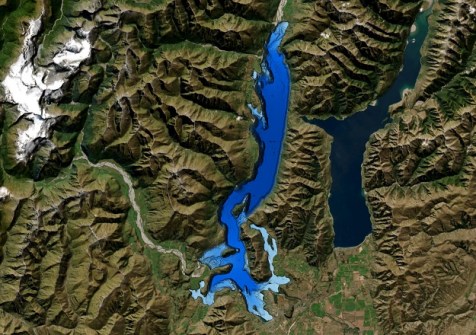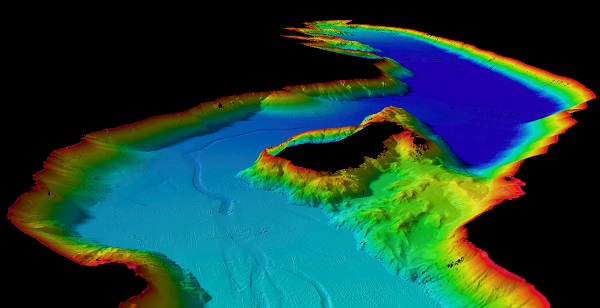
Researchers from New Zealand’s National Institute of Water and Atmospheric Research (NIWA) have mapped the entirety of the country’s famous Lake Wānaka using bathymetry.
The work was done to better understand the lake’s underwater structure and potential for earthquakes and tsunamis, after an active fault was discovered there three years ago.
“Lake Wānaka is one of the most photographed locations in the country but until now its depths have remained a mystery. We discovered some really interesting features, including complex channel systems from the rivers that feed into it,” said NIWA marine geology technician, Sam Davidson.
“We also saw dramatic steep slopes that plummet to the deepest parts of the lake. Wānaka sits in a U-shaped valley which was carved by an ancient glacier during the last ice age over 10,000 years ago; these features and the lake’s geological history came to life in front of our eyes.”
Using a multibeam echosounder mounted on a small dive vessel, the researchers spent several weeks building up a full 3D model of the entire area.

NIWA are developing computer models of the lake and its catchment, but until now have had to rely on charts created in the 1970s.
“This new depth data that we’ve captured is more accurate and detailed. This is especially important in shallow parts of the lake like Roys Bay and Stevensons Inlet, but also where rivers flow into the lake, because these areas have seen some of the biggest impacts and changes since the 1970s,” said NIWA hydrodynamics scientist, Dr David Plew.

NIWA’s work will also be used to study hazards from future seismic activity.
Lake Wānaka is at risk of experiencing a tsunami-like event due to its location on an active fault and its specific geological features, such as those steep slopes that could create a landslide and pose a risk to lakefront communities.
“Now we have a clear picture of the lake’s structure, we can better inform hazard modellers and councils to better prepare for these events,” said Davidson.






